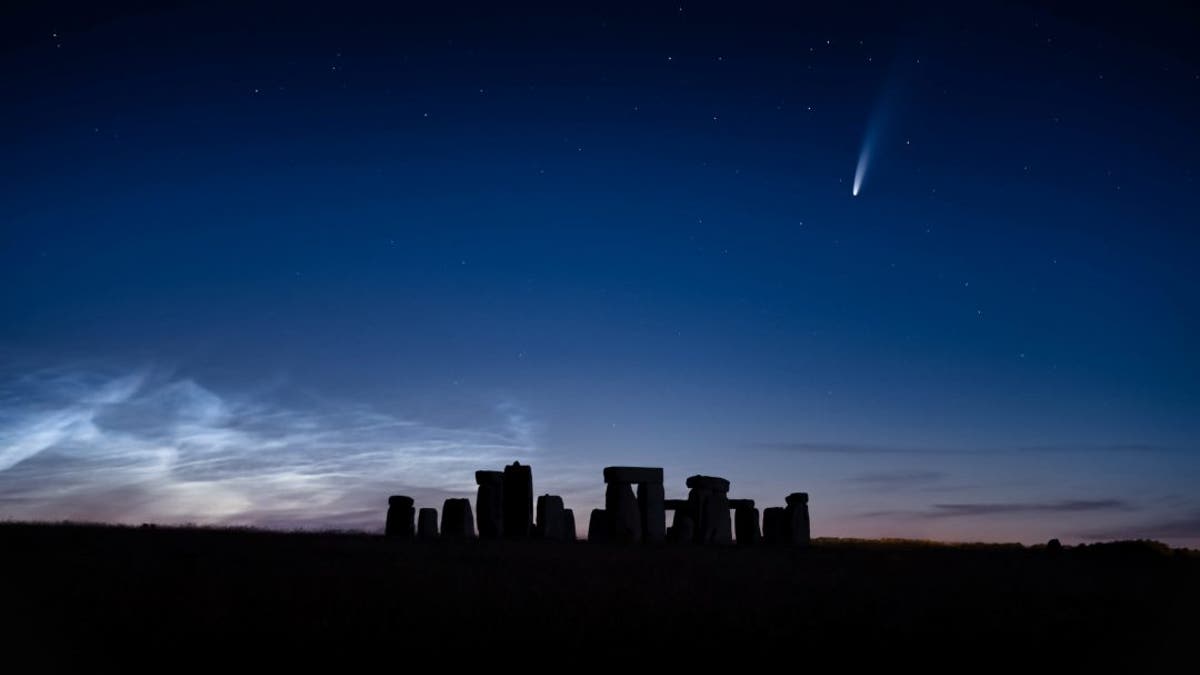Fox News Flash top headlines for July 14
Fox News Flash top headlines are here. Check out what's clicking on Foxnews.com.
A photographer captured a remarkable image of the NEOWISE comet streaking over Stonehenge this past Friday.
Matthew Brown, who hales from Carmarthern, Wales, said he has taken "thousands upon thousands" of images, but this one may be the "photo of a lifetime," reported British news agency South West News Service.
“I’ve taken thousands upon thousands of shots during my career but this has to be one of my favorites," Brown, 37, told the news outlet. “I knew it was going to be one of the clearest nights we had so I had to make my way there. I live in Carmarthen, I thought it was now or never for me to head there and get myself a photo of a lifetime."

A blazing comet that has traveled for 6,800 years was seen streaking over Stonehenge on a perfect summer's evening. (Credit: SWNS)
A COMET IS VISIBLE THIS MONTH: NASA HAS THESE TIPS FOR SKYWATCHERS
The comet, also known as C/2020 F3, was discovered on March 27 by NASA’s NEOWISE (Near-Earth Object Wide-field Infrared Survey Explorer) space telescope.
Brown, a professional photographer by trade, said he takes images at all hours of the day, but that particular night sky was "spectacular."
“It was absolutely worth it," Brown said of the two-and-a-half-hour drive to get to Stonehenge. "I’d have kicked myself if I hadn’t gone and missed out. “It’s not something you see often and to see it all at Stonehenge made it special.”
NASA CAPTURES REMARKABLE IMAGE OF NEWOWISE COMET
The comet, which can be observed with the naked eye, has been visible since July 7, NASA said on its website.
“Through about the middle of the month, the comet is visible around 10 degrees above the northeastern horizon (the width of your outstretched fist) in the hour before dawn," the space agency added. "From mid-July on, it's best viewed as an evening object, rising increasingly higher above the northwestern horizon.
NEOWISE COMET AND RARE ASTRONOMICAL PHENOMENA CAPTURED IN REMARKABLE IMAGE
“The comet takes about 6,800 years to make one lap around its long, stretched out orbit, so it won't visit the inner solar system again for many thousands of years,” the agency explained on its website.
NASA notes that the comet’s closest approach to Earth will be on July 22, at a distance of about 64 million miles.
Fox News' James Rogers contributed to this story.

